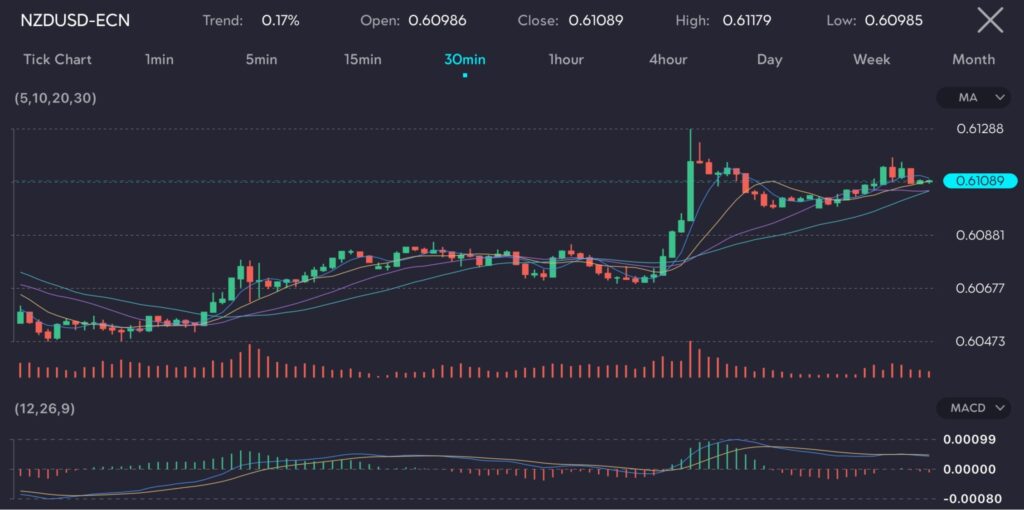Key points:
- The New Zealand dollar appreciates to $0.611 as the US dollar weakens on soft US data.
- Fed officials indicate a cautious stance on rate cuts despite positive inflation trends.
- The Reserve Bank of New Zealand (RBNZ) expected to maintain interest rate at 5.5% in upcoming decision.
The New Zealand dollar (NZD) appreciated to $0.611 against the US dollar (USD) as soft labor market data and weaker-than-expected services activity in the US fueled speculation about potential Federal Reserve rate cuts later in the year.
The US dollar slipped as markets reacted to these economic indicators, prompting a shift in market sentiment.
Picture: Kiwi appreciating against the USD, as observed on the VT Markets app.
During the June meeting, Federal Reserve officials acknowledged that inflation was moving in the right direction. However, there were concerns that the progress was not sufficient to justify immediate rate cuts.
Some policymakers emphasised the importance of patience, suggesting that the Fed should wait for more definitive signs of sustained inflation reduction before considering lowering borrowing costs. Conversely, several officials indicated that additional rate hikes might be necessary if inflationary pressures were to rebound.
Related article: Interest rate tug-of-war for central banks: Hawkish vs dovish
Such soft US data has provided support for the NZD, boosting its value against the USD. This appreciation reflects a broader market expectation that the Federal Reserve might adopt a more dovish stance in the coming months.
Response from the Kiwis
At home, the Reserve Bank of New Zealand (RBNZ) is set to deliver its interest rate decision next week. It is widely expected that the RBNZ will maintain its official cash rate at 5.5% for the eighth consecutive time.
The consistent stance from the RBNZ highlights its commitment to managing inflation and supporting economic stability.
Risks and opportunities for NZDUSD
Looking ahead, the movement of the NZDUSD currency pair will be closely tied to further economic data releases and central bank communications. Traders should monitor the upcoming US non-farm payrolls report and the rate decision from the RBNZ for potential market-moving insights.
While the NZD has gained ground, it remains vulnerable to shifts in global risk sentiment and US economic developments, and as such would require good risk management as traders navigate the markets.










